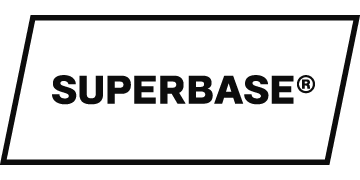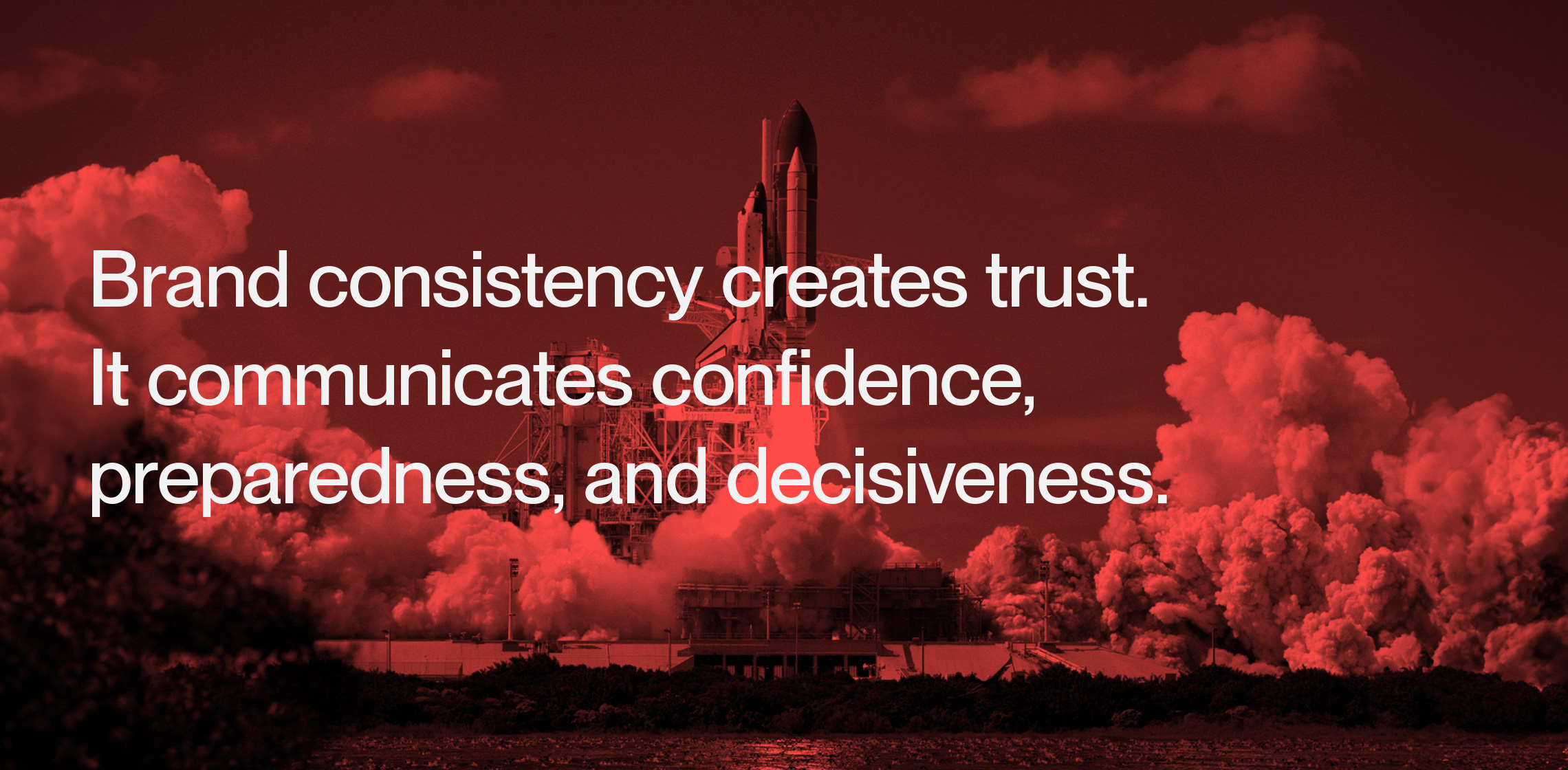8 Steps for Launching Your Rebrand
Going Public with Your Rebrand the Right Way
Whether you’re launching a new brand or unveiling a recent rebrand, doing it the right way can make all the difference. If you’ve recently gone through the process of a rebrand or you’re worried about how to transition smoothly, keep reading. Your brand is how the public identifies your business visually and psychologically. As we discussed in this article, a strategic rebrand can improve your company in more ways than one.
There is a lot to think about as you embark on the daunting task of rebranding, but there is even more to consider as you plan your new brand launch or rebrand rollout. As the saying goes, it’s important to begin with the end in mind. But no matter how great your new brand may be, if it isn’t rolled out properly, your business is missing out on some valuable opportunities.
A couple of the most common mistakes that businesses make when rolling out their rebrand are:
• Missing out on the opportunity to excite the market and get people talking
• Confusing your customers by transitioning your brand clumsily
With the intent of helping you mitigate these pitfalls, here are 8 important steps that can reduce the pre-launch stress and ensure your rebrand is a success. We’ve even included a free downloadable preflight checklist here.
1. Have a Plan: Begin with the End in Mind
One of the most important considerations when launching a new brand or rolling out a rebrand is to anticipate and prepare for, as much as possible, any potential pitfalls. This is done by thoughtfully planning your rollout ahead of time. Work with a reputable Intellectual Property Attorney to research the availability of your new mark, filing all appropriate trademark applications with state and federal trademark organizations. Prior to the launch, meet with your team and ask questions such as “Who do we tell first? How do we tell them? Do we have the necessary trademarks in place? Who will prepare all of the rollout assets? Who is responsible for answering any questions or dealing with any customer or media backlash, if it were to happen?” With this level of detail, create your own checklists and timelines, assigning key people to help with carrying out some of the responsibilities and ensuring each department is equipped with the necessary resources.
“If you fail to plan, you are planning to fail.”
— Attributed to Benjamin Franklin
2. Get the Message Right
What is the underlying story with your rebrand? As part of your preparation, you should be able to answer these questions clearly and concisely:
“Why did you rebrand?”
“What’s different about your brand?”
“What does it mean?”
“Has anything else changed about your business?”
While you want to make your new brand rollout as exciting as possible, there are rare situations where it may not always be a good strategy to over-hype your rebrand. Sometimes, your customers may not even care that you spent so much time and energy updating your brand, and on the other hand, sometimes a rebrand is just the thing they may need to start caring about your organization again. It’s important for you to know the difference, empathize with your customers, and present your rebrand accordingly.
Regardless of how much or how little you decide to publicize your rebrand, always remember to highlight your Unique Value Proposition (UVP) and make sure the message centers around how this rebrand will help you serve the market better and improve the experience your customers have with your brand.
“Decision is a sharp knife that cuts clean and straight; indecision, a dull one that hacks and tears and leaves ragged edges behind it.”
– Unknown
3. Use This Rebrand Preflight Checklist
Brand consistency creates trust and communicates confidence, preparedness, and decisiveness. Be sure to update your visual identity on all platforms and materials synchronously and speedily. You definitely don’t want to have a different logo on your website than you do on your social media profile, or send out stationary with the old logo just because you already have a stack of them printed. Make the concerted effort with all departments to adopt your new brand identity simultaneously.
The following checklist is helpful to consider when planning your rollout. Work with an experienced digital marketing partner, web developer, and IT support team to help with some of the more technical items such as URL redirects, email routing, etc. Spend plenty of time testing these types of changes on several devices and browsers to ensure everything transitioned smoothly.
Note that the following checklist is merely an outline of some of the most common items to address when rolling out your new brand and NOT a complete list. Every company will have different needs, so give yourself plenty of time to work out the kinks by doing an internal soft launch prior to the public rollout as recommended in Step 4.
I. Plan Ahead & Do the Necessary Research
▢ Brief all stakeholders on key objectives of the rebrand
▢ Brief the internal team, preparing them for the rollout
▢ Maintain communication with your Intellectual Property Attorney about your mark and where and how it will be used
▢ Make a timeline with specific dates for each rollout step
▢ Begin the ideation of early marketing assets such as pre-hype teasers, press releases, or other announcements as appropriate
II. Unify Your Brand Identity
▢ Follow Brand Guidelines closely
▢ Create content and media guidelines
▢ Organize a brand asset library
▢ Archive all old brand assets to prevent accidental access
III. Update Your “Owned” Online Presence
▢ Header, footer, favicon and other logos on website
▢ Domain names
▢ URL redirects and email forwards (test on multiple devices & browsers)
▢ Email addresses (and signatures)
▢ Website and page titles
▢ SEO keywords, meta data, etc.
IV. Update Your Social Media Profiles
▢ Social media handles (Contact us to receive your own custom Digital Presence Playbook)
▢ Social media account names and username/login
▢ Social media profile pics
▢ Social media bios
▢ Hashtags
V. Update Your Other Marketing Materials
▢ Newsletter templates
▢ Promotional materials and other merchandise
▢ Google My Business directory listing
▢ Other third-party listings, Wikis, profiles, etc.
VI. Update Your Packaging & Labels
▢ Packaging design
▢ Labels
VII. Other Administrative Housekeeping Items
▢ Email signatures
▢ Business cards
▢ Internal documents (employee handbooks, newsletters, etc.)
▢ External documents (letterheads, sales materials, presentations)
▢ Financial materials (e.g., invoices)
▢ Signage (exterior signage at headquarters, in-store signage at retailers, etc.)
▢ Uniforms (shirts, headwear, etc.)
▢ Vehicles (delivery truck wraps, door decals, etc.)
▢ Third-party trade directories, phone books, etc.
▢ Trademarks (update all trademark registrations, filing new ones where appropriate)
▢ Create a phase-out plan for old packaging and promotional items
*We understand that for a variety of reasons, some brands choose to not transition everything simultaneously. If you opt to introduce your new brand in phases, you will still need to notify all internal and external associates of the schedule and make sure the phased transition looks and feels well-planned.
**Highly visible items like your website, search engine listings, social media profiles, and signage should be prioritized. Plan for delays that are common with items such as signage, merchandise, and any new construction. While you can update your social media profile logo in only a few moments, it can take several weeks to get the new sign installed or the new shirts embroidered. Don’t miss out on the opportunity for an exciting reveal.
***Remember to update your name and logo on ALL channels, across ALL platforms where you have created a profile. We are NOT recommending that you create and manage a profile on each of these platforms below. Contact us to receive your own custom Digital Presence Playbook, learn how to select a Pillar Platform, and effectively redirect users to your Pillar Platform(s). The following isn’t an all-inclusive list and will change constantly, but this alphabetized list can be a helpful starting point:
| Apple Basecamp Behance Bing Bitly Clubhouse Discord Facebook or Meta Flickr Gmail Google Maps or MyBusiness Google Profile Linkin.bio Medium Messenger Meta or Facebook Microsoft Monday MySpace |
Patreon Quora Skype Slack Snapchat Spotify Stack Exchange Teams Telegram TikTok Tumblr Twitch Twitter or X Vimeo Yelp YouTube X or Twitter Zoom |
4. Soft Launch Your New Brand Internally First
The best way to work out any kinks, prepare for questions that may arise, and involve your entire team with the brand story is to do a soft launch internally.
Here are a few things you can do in the days or weeks leading up to your public launch:
• Help your team understand exactly what you have updated with your brand and why you decided to do it. Address the problems you were trying to solve and the strategy behind the creative decisions that were made.
• Have your internal marketing or creative department give a brief walk-through of the process and explain the brand story from concept to final execution.
• Invite questions and designate point people to address these questions.
• Let your internal team be the first to have the brand in their hands by providing them with the very first branded merchandise.
• Be sure to synchronize efforts if deploying across multiple offices, countries or to remote employees.
• After launching internally, consider rolling out to third-party vendors or other B2B partners before the public launch. This can be delegated to department leaders who interface with these external partners regularly, allowing them to feel vested in the rebrand and giving them a first look at this exciting next stage for your brand.
• Confirm that everyone knows who they should go to for brand-related questions, approvals, and where to find all of the necessary brand assets.
5. Use PR to Announce Your Presence & Stake Your Claim
In order to affirm your brand position, stake your claim, and notify the market of your new brand or rebrand, we highly recommend working with media outlets to generate early editorial coverage. Issuing press releases through reputable channels that will maintain links to press coverage about your brand is another great way to get some published coverage. Not only does this confidently introduce the market to your new brand, it also serves as a “paper trail” of any changes you make to your business and brand. This can be important if you ever need to defend your intellectual property against potentially conflicting brands that launch around the same time or shortly after.
6. Follow the Brand Guidelines
After launching a new brand or rolling out a rebrand, it’s more important than ever to strictly adhere to your Brand Guidelines. Your Brand Guidelines are a tool to help you amplify your brand visual identity and uphold your brand integrity, ensuring that all visual communications are consistent and recognizable. Avoid the temptation to go “off-roading” with your new brand visual identity. Keep your fonts and colors consistent, follow the do’s & don’ts in the guidelines, and refer to the Brand Expression examples for direction on appropriate application of your visual identity.
Your team can always collaborate with a partner agency like Superbase for help implementing the updated Brand Guidelines and organizing assets such as logos, fonts, color palettes, etc.
7. Maintain the New Momentum
Before the launch, create an updated stockpile of promotional assets such as emails, social media posts, product/lifestyle images, and announcements and have them in the queue, ready to publish right away. Set aside enough creative material to carry on with a consistent cadence on each of your Pillar Platforms (see your Digital Presence Guidebook).
There is nothing more anticlimactic than making a big announcement about your rebrand and then not following it up with a steady rollout of new marketing collateral.
8. Have Fun: Make Your Rollout an Engaging Experience
Prior to unveiling your rebrand, it’s important to remember the original intent. If you sense that some team members are getting cold feet, avoid the temptation to give in to panic or revert back to the stale brand that you wanted to refresh in the first place.
Making sure that your entire team is confident in the rebrand is critical to a successful rollout. A rebrand is a great time to rally your team and get them excited about participating in marketing efforts that they might not typically get involved with.
You know better than anybody that your brand was not built overnight. It is the result of a lot of diligence and hard work- often compounded over the course of many years. Similarly, it might take some time for your customers to connect with your rebrand in any measurable way. This rebrand rollout is not the end; it merely marks the beginning of an exciting new stage in your brand’s story of growth.
“Your brand was not built overnight. It’s the result of a lot of diligence and hard work, often compounded over the course of many years.
Similarly, it might take some time for your customers to connect with your rebrand in any measurable way.
A rebrand isn’t a cure, it merely marks the beginning of an exciting new stage in your brand’s story of growth.”
Need help at any stage in the process of updating your brand? Reach out to Superbase with any questions or requests.
Afterword: This article was NOT generated by means of artificial intelligence (AI). It was created by multiple human contributors with significant experience in the subject matter. Imperfections and practical perspectives are indicative of the content’s humanoid origin. Visit the Superbase blog for more valuable content.





